What is steel?
Steel is one of the most important metal alloys used in many different industries. The outstanding properties of steel have made it a very popular and widespread material in the construction, automotive, industrial, marine and many other industries. Steel, as an iron-carbon alloy, acquires unique properties by adding other elements such as nickel, chromium, molybdenum, and vanadium. These properties include high resistance to bending and stress, corrosion resistance, hardness, flexibility, and weldability. Steel has been used in various industries since ancient times. In the past centuries, steel was known as an extremely limited and expensive material, but with the advancement of technology and production methods, steel has become widely available and has become one of the basic and major materials in industries. In this article, we will answer the important question of what is steel and examine its types, stay with us.
Types of steel
- Carbon steels
- Alloy steels
- Stainless steels
- Tool steels
Carbon steels
Carbon steels are a type of steel that has a significantly higher carbon concentration than other types of steels and may contain up to 2.5% carbon. Adding carbon to carbon steel increases its strength. Due to its properties such as high strength, adjustable hardness, welding ability, carbon steels are used in the construction industry, tool production, auto parts and other industries.

Types of carbon steels
Adding more carbon to carbon steel can change its properties. Low carbon steel has a carbon concentration of less than 0.3% and is typically used for parts that require flexibility and easy welding. Medium carbon steel has a carbon concentration between 0.3% and 0.6% and has greater strength and hardness than low carbon steel. Steel that has a lot of carbon has a carbon concentration higher than 0.6% and because of its higher hardness, it is used to produce cutting tools and parts that require high hardness. According to the explanations given, carbon steels are divided into 3 main categories.
- Low carbon steel
- Medium carbon steel
- High carbon steel
Low Carbon Steel
Low carbon steel, or mild steel, has a lower carbon-to-iron ratio than other types of steel, usually in the range of 0.05% to 0.32% by weight. This makes low-carbon steel less resistant, yet more workable and ductile than high-carbon steel. Low carbon steel is used in various industries such as automobile manufacturing, building construction, production of tools and industrial and laboratory equipment due to its reasonable price, easy access and diverse applications. However, for some applications that require greater strength, it may be necessary to use steel with higher carbon and greater mechanical properties.
Medium Carbon Steel
Medium carbon steels usually have a carbon content between 0.3% and 0.6%. These types of steels provide a balance between the ductility and malleability of low carbon steel and the strength and hardness of high carbon steel. They are stronger and harder than low carbon steels due to the increased carbon content, but they are less ductile and their forming and welding processes are more difficult. To achieve desirable mechanical properties, they often require heat treatment such as quenching and tempering. Manganese content can also be between 0.30% and 0.60% in these types of steels.
High Carbon Steel
High carbon steels contain carbon content between 0.60% and 1.5%. Increasing the carbon content in these steels makes them much more resistant to corrosion. High carbon significantly increases hardness, tensile strength and wear resistance in these steels. For this reason, high carbon steels are suitable for applications that require high strength and wear resistance.
However, the higher carbon content also makes these steels more brittle and less ductile, which can make them more vulnerable to cracking under certain conditions. Also, welding high-carbon steel is more challenging than low-carbon steels, because there is a risk of cracking and brittleness in heat-affected areas. As a result, high-carbon steels with a carbon content between 0.60% and 1.5% are suitable for applications that require high strength and resistance to corrosion and wear due to their special characteristics.
Alloy steels
Alloy steels are made by combining carbon steel with one or more alloy elements such as titanium, copper, chromium, aluminum, manganese, silicon and nickel. These alloying compounds and other elements give carbon steel special properties that are not found in standard carbon steel. These alloying elements can change the mechanical properties, corrosion resistance, heat resistance, electrical resistance and other properties of steel. For example, alloy steel by adding chromium to carbon steel creates higher corrosion resistance properties. Alloy steel with the addition of nickel offers higher heat resistance and mechanical strength than carbon steel. Other alloy compounds can also bring different properties in alloy steel.

Alloy steels are used in many industries due to their special properties and variety. Some of their common applications include the automotive industry, aerospace industry, construction, marine industry, manufacturing tools and medical equipment. Alloy steels can meet the specific needs of every industry due to their various compositions and properties.
Stainless steels
Stainless steel is a type of steel alloy that contains at least 11% chromium in its composition. This amount of chromium makes steel resistant to corrosion in different materials and environments. Due to its special properties, stainless steel is widely used in applications where corrosion resistance is essential. Stainless steel usually contains a fair amount of chromium, but may also contain other alloying elements such as nickel, molybdenum, copper, and titanium. These alloy compounds give stainless steel additional properties and increase its resistance to corrosion, rust, oxidation and even in some cases to heat.
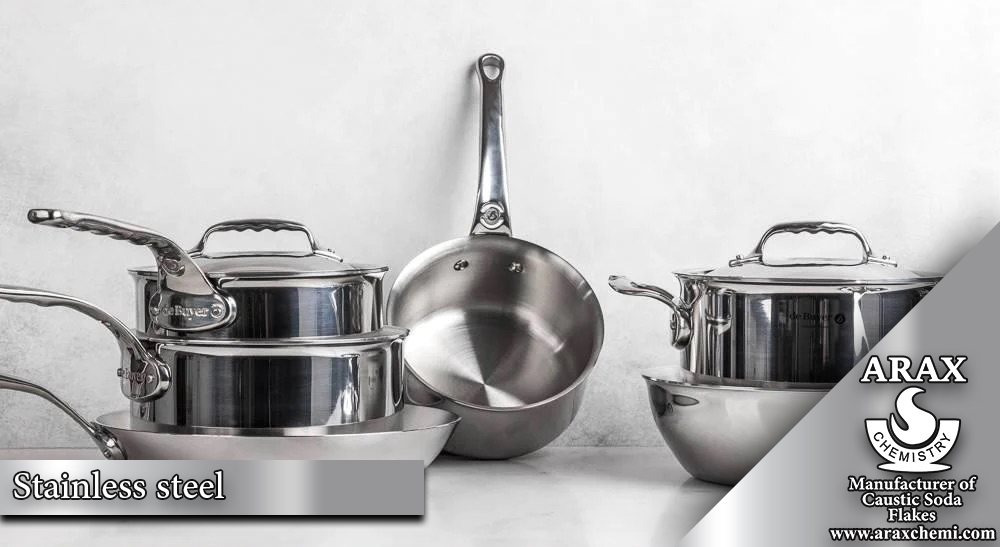
Stainless steel is used in various industries. Some of its common uses include the production of kitchen utensils, medical equipment, confectionery tools, gardening tools, cutlery, sanitary ware and aerospace industries. Due to its high resistance to corrosion and rust, stainless steel is very suitable for environments that are in contact with moisture, acids, bases and weather conditions.
Tool steels
High-carbon and alloy steels, known as “tool steels,” are widely used for machining metals, plastics, and wood, and for making cutters, reamers, bits, and other necessary tools. Tool steels generally contain elements such as cobalt or nickel to improve strength and performance at high temperatures, and carbide to increase wear resistance. Also, elements such as chromium, vanadium, molybdenum and tungsten are used in various combinations of tool steel.
Most tool steels are produced in electric arc furnaces. In this process, the raw materials are melted, purified and brought to the correct composition. Then, the material is poured into ingots and rapidly cooled. The steel is then annealed to prepare it for further processing. Some tool steels are produced by other specialized processes such as powder metallurgy.
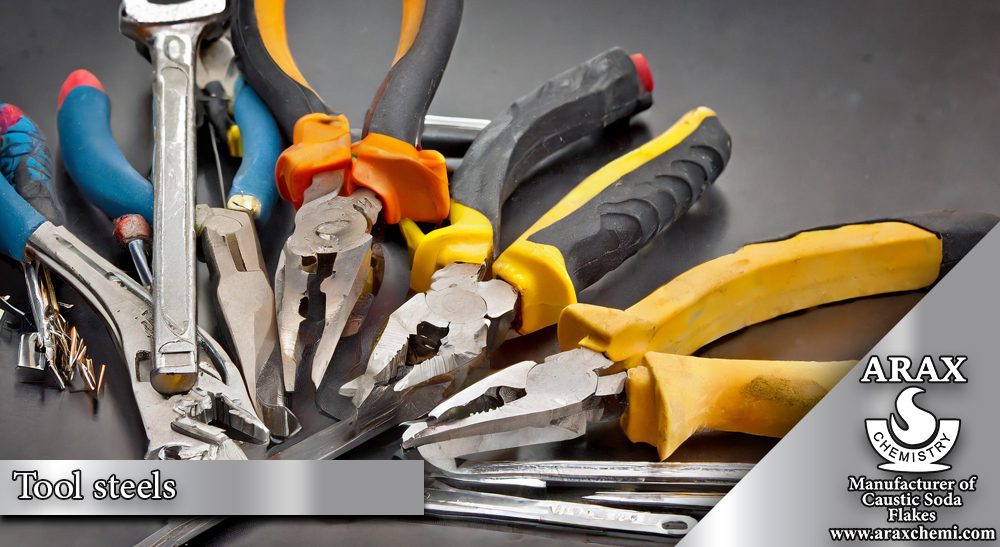
Tool steels are used as basic materials in various industries due to their special characteristics. These steels are able to perform tough tasks and are resistant to pressure, wear and high temperatures. Applications of tool steels include the production of hand tools, machine parts, cutting and turning tools, agricultural tools and construction industries. Due to their unique characteristics, tool steels are highly sought after in industries that require durable and widely used tools.
Carbon steel and alloy steel grades
In the grading system of carbon and alloy steels, the first digit indicates the main alloying elements, while the second digit indicates the high-grade alloying elements added to the alloy. The third and fourth digits show the amount of carbon in the alloy. According to the first digit, it is possible to analyze the grade of steel under this name.

- 1000 series are carbon steels.
- Series 2000 are nickel steels.
- 3000 series are nickel chrome steels.
- 4000 series are molybdenum steels.
- 5000 series are chrome steels.
- 6000 series are chrome vanadium steels.
- 7000 series are tungsten steels.
- 8000 series are nickel-chromium-molybdenum steels.
- Series 9000 are manganese silicon steels.
Stainless steel grades
In the SAE stainless steel grading system, like the four-digit system, the first number indicates the main alloy used in the steel. Stainless steel grades are divided as follows:
200 series stainless steels: These grades contain a high amount of nickel and are suitable for corrosion and heat resistance. Example: grades 201, 202, 205, etc.
300 series stainless steels: These grades have less nickel but high chromium content. They have good strength and corrosion resistance. Example: grades 304, 316, 321, etc.
400 series stainless steels: These grades contain high amounts of chromium and are suitable for corrosion resistance and mechanical strength. Example: grades 410, 430, 446, etc.
500 series stainless steels: These grades contain titanium or niobium to increase corrosion resistance. Example: grades 501, 502.
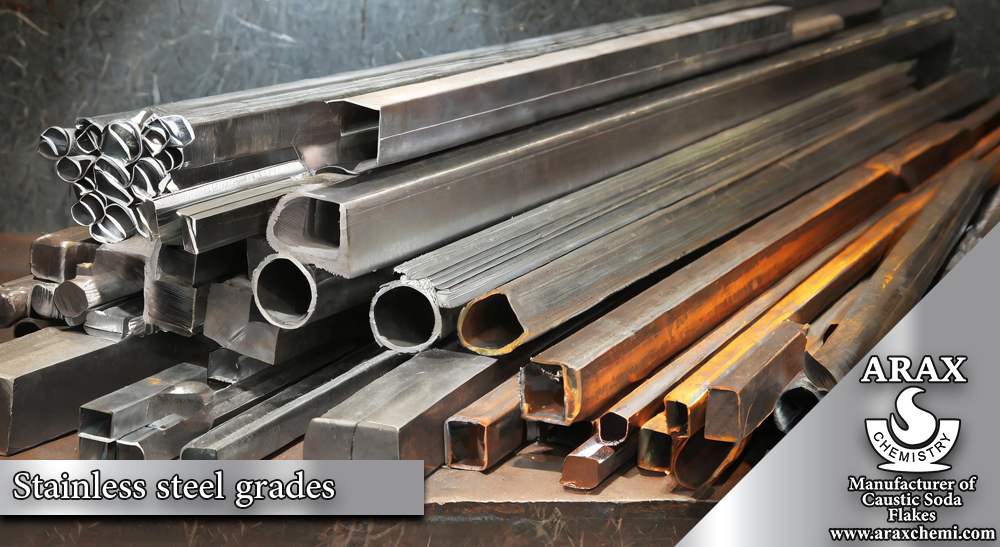
Also, some stainless steel grades may contain additional alloying elements added as other prefixes to the grade number, such as 316L grade, which contains the least amount of carbon.
Tool steel grades
A series: are cold worked steels that are hardened in air.
D series: cold worked steels with high carbon and high chromium.
F series: are special steels that are made based on carbon and tungsten.
H series: are hot worked steels. H1 to H19 are based on chromium, H20 to H39 are based on tungsten and H40 to H59 are based on molybdenum.
L series: There are special steels that are low alloy.
M series: high-speed steels that are made based on molybdenum.

O series: are cold worked steels that cause oil hardening.
P series: steels used to make plastic molds.
S series: impact resistant steels.
T series: high-speed steels that are made based on tungsten.
W series: are water hardening steels.
All kinds of steel standards
- (ASTM)
- (AISI)
- (JIS)
- (GB)
Steel standard (ASTM)
Steels are classified in different standards such as ASTM (American Society for Testing and Materials) standards. ASTM standards are used to specify the physical and mechanical properties of steels and test and measurement methods. Below, I briefly describe the ASTM steel standards:
ASTM A standards
These standards are used for construction steels. Example: ASTM A36 for structural carbon steels.
ASTM B standards
These standards are used for alloy and non-ferrous steels. Example: ASTM B209 for aluminum and aluminum alloy plates.
ASTM E standards
These standards are used for test methods and measurements in steels. Example: ASTM E8 for tensile test of steel.
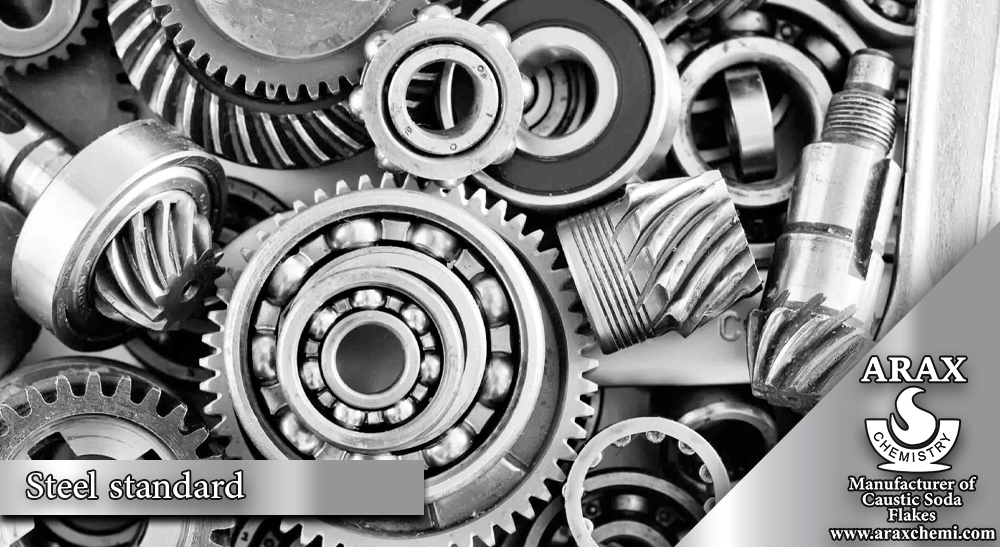
ASTM F standards
These standards are used for steels used in various industries such as aerospace, automotive and medical industries. Example: ASTM F138 for steels used in medical implants.
ASTM A5 standards
These standards are used for welding steels. Example: ASTM A5.18 for carbon steel welding electrodes.
ASTM A6 standards
These standards are used for structural steels by forming and thermal processes. Example: ASTM A6/A6M for general specifications for structural steel products.
ASTM A36 standards
This standard is used for construction carbon steel and is one of the famous and common standards.
Steel standard (AISI)
The AISI (American Iron and Steel Institute) standard is a set of standards defined by this association to determine the properties and chemical composition of steel. Below are some of the important AISI standards for steel:
AISI 300 Series
This series of standards is used for stainless steels with different chemical compositions such as AISI 304, AISI 316 and AISI 321. These steels are commonly used in industrial and domestic applications and have rust and oxidation resistance properties.
AISI 400 Series
This series includes stainless and non-stainless steels, which are composed of different chemical compounds. Examples of these steels include AISI 410, AISI 420, and AISI 440, which are used in applications such as cutting tools, knives, and mechanical parts.
AISI 1000 Series
This series of standards is used for carbon steels with low percentages of sulfur and phosphorus. These steels are commonly used for applications that require high mechanical strength, such as automotive parts, metal structures, and mechanical tools.
AISI 200 Series
This series of standards includes low-nickel stainless steels used for industrial and domestic applications. Examples of these steels include AISI 201 and AISI 202.
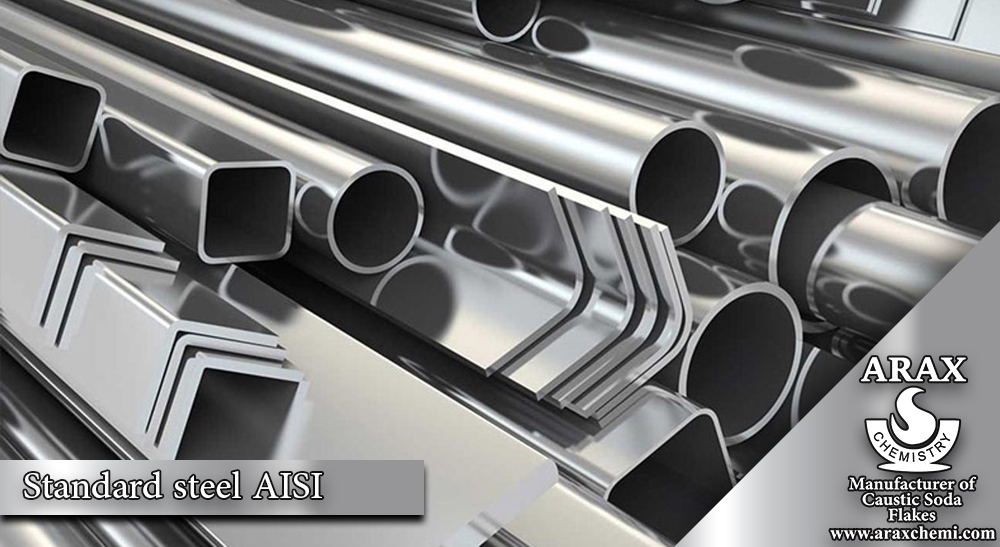
(JIS) steel standard
JIS standard (Japanese Industrial Standards) is a set of standards defined by the Japan Industrial Association and used in various industries including steel and metal industries. Below are some important JIS standards for steel:
JIS G4304
This standard is defined for stainless steels. It includes technical specifications and mechanical properties for stainless steels in the form of plates, strips and sheets. Examples of steels mentioned in this standard include SUS304 (stainless steel with standard chemical composition) and SUS316 (stainless steel with high corrosion resistance).
JIS G3131
This standard is for heat-treated carbon steels. These steels are usually used to produce steel sheets and strips with industrial applications such as automobile panels and gas pipes.
JIS G3113
This standard applies to galvanized and galvanized steel plates. The steels defined in this standard, such as SAPH400 and SAPH440 steels, are made through the galvanizing process and are suitable for use in the construction and automotive industries.
JIS G4051
This standard is defined for carbon alloy steels. The steels mentioned in this standard, such as S45C and SCM440, are used to produce mechanical parts such as nuts, shafts and cutting tools.
These are just a few examples of JIS standards for steel. In each JIS standard, technical specifications, chemical composition, mechanical properties and how to use each type of steel are described in detail. For more detailed information, refer to JIS Standards and References.
Standard steel (GB)
The GB standard (Guóbiāo) or the national standard of China is a set of technical standards defined by the Standardization Administration of China. These standards are used for various industries, including steel and metal industries. The GB standard for steels also defines a set of specific standards. Below are some important GB standards for steel:
GB/T 1220
This standard is defined for stainless steels. It includes technical specifications and mechanical properties for stainless steels in the form of strips, plates and sheets. Examples of steels mentioned in this standard include 1Cr18Ni9 (stainless steel with standard chemical composition) and 1Cr18Ni9Ti (stainless steel with high corrosion resistance).
GB/T 700
This standard is defined for carbon steels. The steels defined in this standard are usually suitable for use in the construction industry, automotive industry, and machine building. Examples of steels containing GB/T 700 are Q235 (structural carbon steel) and Q345 (high strength carbon steel).
GB/T 3077
This standard is defined for alloy steels. GB/T 3077 forming steels usually contain alloying elements such as chromium, copper, nickel and molybdenum. These steels are used to produce mechanical parts with high strength and good heat tolerance. Examples of steels defined in this standard include 42CrMo (high strength alloy steel) and 20CrNiMo (alloy steel for manufacturing mechanical parts).

These are just a few examples of GB standards for steel. Each GB standard contains more detailed specifications about chemical composition, mechanical properties, and these are just a few examples of GB standards for steel. Each GB standard contains more detailed specifications about the chemical composition, mechanical properties, usage and other characteristics of the defined steel. For more detailed information, refer to reference sources and GB standards.
Conclusion
Steel is an iron alloy that is strengthened by adding other elements such as chromium, nickel and copper. JIS and GB standards are two famous standards for steel. The JIS standard is defined for stainless steels, carbon steels and alloy steels. The GB standard is also defined for stainless steels, carbon steels and alloy steels. Each standard includes technical specifications and properties of different steels and helps to produce industrial parts in different industries.
